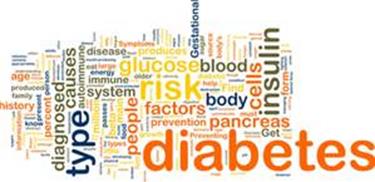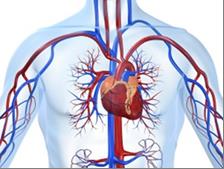Step 1: Improvement Digestion and
Control Underlying Problems
Control Underlying Problems

Gene Wolfe
Nothing contributes more to your overall health than digestive wellness. No matter how well you eat, if your digestive system isn’t breaking down and absorbing the nutrients, your body can’t get what it needs to keep you healthy. You aren't what you eat; only what you absorb. What you take in beyond your capacity to digest will cause you harm.
eyes problems and digestion. In order to fix
your eyes problems you need to repair
your digestion first.
- Slash inflammation by removing foods that increase irritation in your gut.
- At the same time add in amazingly tasty, powerful foods as your antibacterial and anti-yeast medicine.
even when you are eating healthy foods.
with whole foods,
undertake the following steps:
Normal gut flora maintains gut wall integrity through protecting it, feeding it and insuring normal cell turnover. When the beneficial bacteria in the gut are greatly reduced, the gut wall degenerates. At the same time various opportunists, when not controlled by damaged good bacteria, get access to the gut wall and damage its integrity, making it porous and “leaky”. Partially digested foods get through the damaged “leaky” gut wall into the blood stream, where the immune system recognizes them as foreign and reacts to them. This is how food allergies or intolerances develop.
So, there is nothing wrong with the food. What is happening is that foods do not get a chance to be digested properly before they are absorbed through the damaged gut wall. So, in order to eliminate food allergies that cause many chronic conditions it is not the foods we need to concentrate on, but the gut wall. In my experience, when the gut wall is healed many food intolerances disappear. That is why we do first Introduction Whole Food Diet.
- It removes fiber. With damaged gut wall fiber irritates the gut lining and provides food for the pathogenic microbes in the gut.
- It provides nourishment for the gut lining: amino acids, minerals, gelatin, glucosamine, collagens, fat soluble vitamins, etc.
- It provides probiotic bacteria in the form of fermented foods and whole food supplements.
After Introduction Whole Food Diet you do Elimination Diet to figure out what foods you react to. It will help you to find offending food. Start now to remove the triggers and causes that seed the horrible and painful symptoms that we call modern disease.
I recommend using both the whole food supplements and herbs. The combination of supplements and herbs is more effective for your health. These supplements and herbs are organically grown, processed raw without heat or chemicals, and are rich in the live nutrients that keep us healthy and strong.
- How to do 6 stages Introduction Whole Food Diet in details to improve your gut
- How to do Elimination Diet
- How to implement Digestive Whole Food Supplements and Herbs

Researchers have found that individuals with type 2 diabetes have a much greater incidence of eyes problems than people with normal blood sugar levels.
Although conventional surgical treatment is an important consideration in the management of advanced cataracts, glaucoma and macular degeneration, the medical establishment often fails to emphasize the need to maintain healthy blood glucose levels to slow progression or prevent onset of eyes problems. Most physicians appreciate the association between diabetes and eyes problems, but many overlook the role of elevated blood sugar in the formation eyes problems among non-diabetics.
The eye is particularly susceptible to glycation reactions, in which high glucose concentrations damage proteins and contribute to tissue dysfunction. A number of human studies have associated higher-than-normal glucose levels with substantially increased risk of various types of eyes problems. Sadly, although it may be possible to prevent them or slow their progression simply by controlling blood sugar levels, many at-risk individuals remain unaware of the profound impact of elevated glucose levels on the lens and retina of the eye.
- How diabetes affect your eyes
- How you become insulin resistant, and then diabetic
- Why insulin is the most powerful and dominating fat storing hormone
- How to control diabetes to help eyes problems

Cardiovascular Disease is a chronic disease that is the number one cause of death in the world. It affects 81.1 million adult Americans (1in 3), 39 million men and 42.1 million women. There are 831,272 deaths per year in the US alone. About every 25 seconds, an American will have a coronary event, and about one every minute will die from one. The total cost of cardiovascular disease in 2008 was estimated at $300 billion. Unfortunately, cardiovascular disease is one of the most misdiagnosed and mistreated condition in medicine.
Ever¬yone knows that the heart is a vital organ. We cannot live without our heart. However, when you get right down to it, the heart is just a pump. A complex and important one, yes, but still just a pump. As with all other pumps it can become clogged, break down and need repair. This is why it is critical that we know how the heart works. With a little knowledge about your heart and what is good or bad for it, you can significantly reduce your risk for heart disease.
One of the most interesting features of cardiovascular disease is that symptoms are not only present in the body, but can be found in the eyes as well. In fact, current research suggests that cardiovascular disease may be spotted early through a regular eye exam because symptoms of the condition may be spotted in the eyes sooner than they are spotted in the body.
eye blood vessels correspond to changes in
the heart blood vessels





